How to profit as baby boomers retire
The world is getting older. And those retiring have big pots of money to spend, and time on their hands, says James McKeigue. Here’s how to profit.

Nicknamed the executioner', light heavyweight boxer Bernard Hopkins isn't everyone's cup of tea. A convicted criminal, who has been involved in a series of racial controversies, he's one of the sport's most notorious names. But he's also a glimpse of the future, because, at 48, he is the oldest man in boxing history to win a recognised world championship. Born in January 1965, a month after the official end of the West's post-war baby boom, Hopkins is the visible sign of a world where improved diet and medical care is helping people to work and live longer.
Of course, not everyone makes as much of these factors as Hopkins. But we will all be affected by the trend. In Europe, America and China, the over-65 age group is growing at three times the rate of the 20-to-64 age group. In other words, these regions of the world are ageing. One reason behind this is rising life expectancy. Improving living standards and better health care mean more people are living for longer. An incredible two-thirds of all the people ever to have reached the age of 65 are alive today.
The other reason is low birth rates. As countries grow richer, social safety nets expand, and education becomes more widespread, people tend to have fewer children. As a result, the ageing baby boomer demographic is expanding more rapidly than younger age groups.
MoneyWeek
Subscribe to MoneyWeek today and get your first six magazine issues absolutely FREE

Sign up to Money Morning
Don't miss the latest investment and personal finances news, market analysis, plus money-saving tips with our free twice-daily newsletter
Don't miss the latest investment and personal finances news, market analysis, plus money-saving tips with our free twice-daily newsletter
The ageing megatrend
Because of the large span of the baby boom definitions vary, but most agree the term includes those born between 1946 and 1964 this process is ongoing. In 2000, people aged over 60 made up 10% of the world's total population. By 2050 that percentage is likely to have increased to between 20% and 25%. This huge shift will have many profound effects on society, while throwing up challenges and opportunities for businesses. In financial jargon, ageing is a megatrend' and you should position yourself to take advantage. But how?
The first thing to acknowledge is that it's dangerous to put too much faith in long-term forecasts. From the Reverend Robert Malthus's warning in the 18th century that humans would run out of resources to support the growing population, to the more extreme end of the peak oil' views, dramatic, long-term calls have a tendency to be way off, even if based on sound reasoning. But, for the next few decades at least certainly within most people's investment horizons the rough picture of our ageing patterns is fairly predictable. The pensioners of 2050 have already been born, so demographers can have a pretty decent idea of how many of them there will be in 40 years' time. Meanwhile, fertility is falling ever more rapidly, making it seem unlikely that a bumper crop of youngsters is going to come along and balance things out.
Of course, a war or epidemic of some kind could completely rewrite the script. But assuming this type of disaster doesn't happen and if it did you'd probably have more to worry about than your investment portfolio it seems fairly certain that the next 40 years will be defined by a rapid increase in the number of old people in Europe, Japan, America and China.
The old are rich
So what will that mean for business? From an investment perspective, the most important thing to grasp about old people is that as a group they're rich. Forget the stereotype of impoverished pensioners unable to turn on the heating. For the most part, older people in developed countries form the richest segments of the population. According to Britain's Office for National Statistics (ONS), net worth per household peaks when the head of the house is between 55 and 64, before declining slowly as savings are spent in retirement. A similar pattern is seen in America.
Older people have more money, and they like to spend it. US investment bank Morgan Stanley has crunched the numbers from America, Britain and Japan and found that consumer spending per person is concentrated in the higher age groups. In Britain, the biggest annual spenders are those aged between 50 and 64. In America it's similar, and in Japan it's the 55-to-59 age group. All spend considerably more than younger age groups. In short, the wealthiest, most free-spending section of society is only set to grow larger.
That should be music to the ears of Britain's embattled high street. However, older people have distinct spending priorities, and to profit you need to understand what they are. The demographic shift will favour some businesses while undermining others.
How to profit from the trend
One obvious winner is healthcare. According to a recent Morgan Stanley research note, the over-75s in Britain, America and Japan spend more on healthcare than any other age group. That's not surprising, given that this age group has both money and health problems. Companies attempting to treat diseases of old age are particularly likely to profit. Alzheimer's, cancer and diabetes (which can develop later in life) are three such illnesses. In the medical technology sector, hearing aids, dental implants, incontinence products, corrective lenses and orthopaedic treatments are also predominately sold to older people. There's no doubt that demand for these types of treatments and products will grow as the world's population grows older. But investors need to tread carefully demand for a product doesn't always lead to extra profit for the company providing it.
As Meret Gaugler of Lombard Odier's age-focused Golden Age' investment fund points out, "demand alone doesn't guarantee that an investment will do well. We also have to make sure that someone will be around to pay." A wrinkle cream is one thing you just need to consider the financial condition of the producer. But "looking at a hip prosthesis or a cancer drug is more complicated. In much of the world, healthcare is highly regulated and companies depend on governments and societies to shoulder the rising costs of the larger numbers of elderly. That's why we try to single out companies that depend more on private spending or aim to reduce overall healthcare costs. Contributing to such cost reductions could be either through better healthcare management, or by providing innovative solutions to individual diseases."
Good for hotels, bad for clothes shops
But getting older isn't just about healthcare. Thanks to improving medical treatment and healthier lifestyles, most baby boomers enjoy a far better quality of life than any previous generation. Retirement leaves lots more time for games of golf, holidays and days out with the grandchildren and, as a result, this age group is Britain's biggest spenders on recreation and culture activities. The Office for National Statistics puts the annual spend for the 65-74 group at £1,777 per head. So growth in this demographic bodes well for firms in the leisure and hotels sector.
The outlook for fashion retailers isn't so sunny. Morgan Stanley notes that the average person's spending on clothes plummets after the age of 75. That's bad news for the likes of H&M and similar retailers, which rely on selling high volumes of low margin clothing to young people. But some, such as Marks & Spencer, which has a powerful brand with older people, may do well. Another interesting quirk is seen on the food retail side. Spending on staple foodstuffs and non-alcoholic drinks is relatively stable with age. But while people may not change what they eat, they do change where they buy it from. Older age groups shop less in large supermarkets and are more likely to stock up frequently in smaller convenience stores. In Britain, for example, several supermarkets have aggressively been rolling out convenience stores in recent years, while shares in Wm Morrison have suffered partly because of a lack of smaller outlets.
A political battleground
As more people retire, there will be fewer workers to support them. The so-called old-age dependency ratio' the proportion of old people to workers stands at 13.4% across the globe. But in older countries, such as Japan, it is 38%. Britain and America are likely slowly to move to similar levels.
This can cause problems. Older people inAmerica and Britain already account for proportionally more government spending than the young. Across the OECD club of rich countries, people aged 65 and over receive around a third of public spending, despite making up just 15% of the population. As this expands, governments will be saddled with growing healthcare bills and ever fewer tax-paying workers to fund them.
In Britain that's likely to lead to ongoing political battles about how old-age care is funded. Pensions are another key issue. There is no big pension pot of saved taxes from past work. The government pays out state pensions from what it receives from current workers. So as the ratio of retirees to workers grows, public finances will become increasingly stretched, or retirement ages will have to rise. Economic growth could also suffer. As Japan can testify, having fewer workers also drags on GDP. That said, lower GDP growth isn't a certainty. Immigration can boost the workforce, while increased use of robotics can aid productivity.
Ageing also has a powerful effect on asset prices. In America, 10,000 baby boomers are expected to retire each day, every day, for the next 19 years. As they look to start funding cruise trips, golfing holidays and hip replacements, they'll be selling the assets they've accrued over their working lives. The first to go will likely be the riskier shares in their portfolios. This switch, from baby boomers buying shares for pension pots to selling them to fund retirement, could depress stockmarkets for the next decade. In one study, Zheng Liu and Mark M Spiegel of the Federal Reserve Bank of San Francisco comparedthe post-war price/earnings (p/e)ratios of America's S&P 500 index with the relative amounts of middle-aged and old people in the population. When the proportion of middle-aged people to older people rose, so did stockmarket p/e ratios. But when there were large bursts of retirees, the stockmarket became cheaper compared to earnings.
Gloomy as that sounds, we should mention a few caveats before you rush out to sell your shares. These studies are based on relatively short time periods, and many factors other than population age affect stock prices. The labour force in other parts of the world (namely the Andean region of Latin America, sub-Saharan Africa, the Middle East and the Caucasus, and some parts of south Asia) is set to boom. Given that many firms listed on US and UK stock exchanges now get most of their earnings from international markets, these indices may be less badly affected by ageing domestic populations than they once were.
You should make sure your portfolio has some exposure to ageing, so whatever happens, you can profit from it. We look at the best ways to invest in the trend below.
The investments to buy into now
If you plan to invest in the ageing megatrend', you should remember that this is a long-term theme, playing out over decades. So be prepared to give your investments time to benefit from the process. Of all the sectors listed above we'd probably leave retail alone. In the fickle world of consumer branding, who knows whether or not Marks & Spencer will still be popular with older people in ten years' time? And perhaps H&M will grow old and adapt with its customers.
Demand for healthcare, on the other hand, seems much more solid. One firm that looks particularly well positioned is artificial hip and knee manufacturer Smith & Nephew (LSE: SN). Three-quarters of the firm's sales come from selling prosthetic hip and knee implants. It also has a growing business making wound management' products specialised bandages for chronic wounds associated with older people, such as pressure sores or venous leg ulcers. Since we last tipped it in May 2012, the stock is up by around 30%, but the p/e has stayed constant at around 15. It still represents a good play on ageing.
The stock does face some headwinds. It was forced to recall some artificial hips last year when customers complained about one of its metal-on-metal hip replacements. The firm has also been affected by slowing orthopaedic sales in recession-hit Europe, its main market. However, against that it has a healthy balance sheet, which allows it to expand through acquisition. For example, last year it bought US wound specialist Healthpoint Biotherapeutics for $782m. The firm has also recently bought firms in Brazil and India to add emerging-market exposure to its established presence in China. Moreover, while this could take some time, truly long-term investors will benefit when the firm's European market eventually bounces back.
A more fun' investment is cruise-ship operator Carnival (LSE: CCL). Carnival hasn't had the best of luck in recent years, with its boats spending as much time in the headlines as they have in the water. The Costa Concordia disaster in Italy, and much-publicised problems with the plumbing on one particular cruise, have battered the firm's share price. A recent profit warning only added to its woes. But if you're prepared to ride out the volatility, the firm looks a good long-term bet. Through brands such as P&O and Princess Cruises, it accounts for almost half of the cruise market. And the industry is growing rapidly. Increasingly large ships which are basically floating resorts have allowed operators to cut prices and so make cruises more accessible. As the customer base has grown, passenger numbers have rocketed from about 500,000 in the 1970s, to 19 million in 2010. With growing numbers of people set to retire, demand should continue to grow.
The firm should also benefit from the other side of the demographic shift. The rapid bulge in working populations in emerging markets is expected to create huge demand for jobs foryoung people. Put bluntly, that should mean a steady stream of cheap labour for an international business like Carnival. Its current p/e of 17 looks reasonable, if not dirt cheap.
Another good way to play this trend is by using a fund. Lombard Odier's Golden Age Fund (020-3206 6000) is managed by Johan Utterman in New York. Its holdings are spread across the ageing, rich world, with around 50% in America, 30% in Europe and the rest elsewhere. Pharmaceutical and biotechnology firms that are battling to find cures to the chronic diseases of old age make up about 30% of its holdings. For example, Swiss pharma group Roche, with its expertise in oncology, and an Alzheimer's treatment in late-stage development, is the biggest holding. Healthcare and medical technology make up another 28% or so. On the medical technology side, there's Sirona, which develops specialised cameras for dentists. Sales should grow: increasing numbers of older people means more work for dentists. So far Utterman's strategy is paying off, with the fund up 28% in the last year.
Get the latest financial news, insights and expert analysis from our award-winning MoneyWeek team, to help you understand what really matters when it comes to your finances.
James graduated from Keele University with a BA (Hons) in English literature and history, and has a certificate in journalism from the NCTJ.
James has worked as a freelance journalist in various Latin American countries.He also had a spell at ITV, as welll as wring for Television Business International and covering the European equity markets for the Forbes.com London bureau.
James has travelled extensively in emerging markets, reporting for international energy magazines such as Oil and Gas Investor, and institutional publications such as the Commonwealth Business Environment Report.
He is currently the managing editor of LatAm INVESTOR, the UK's only Latin American finance magazine.
-
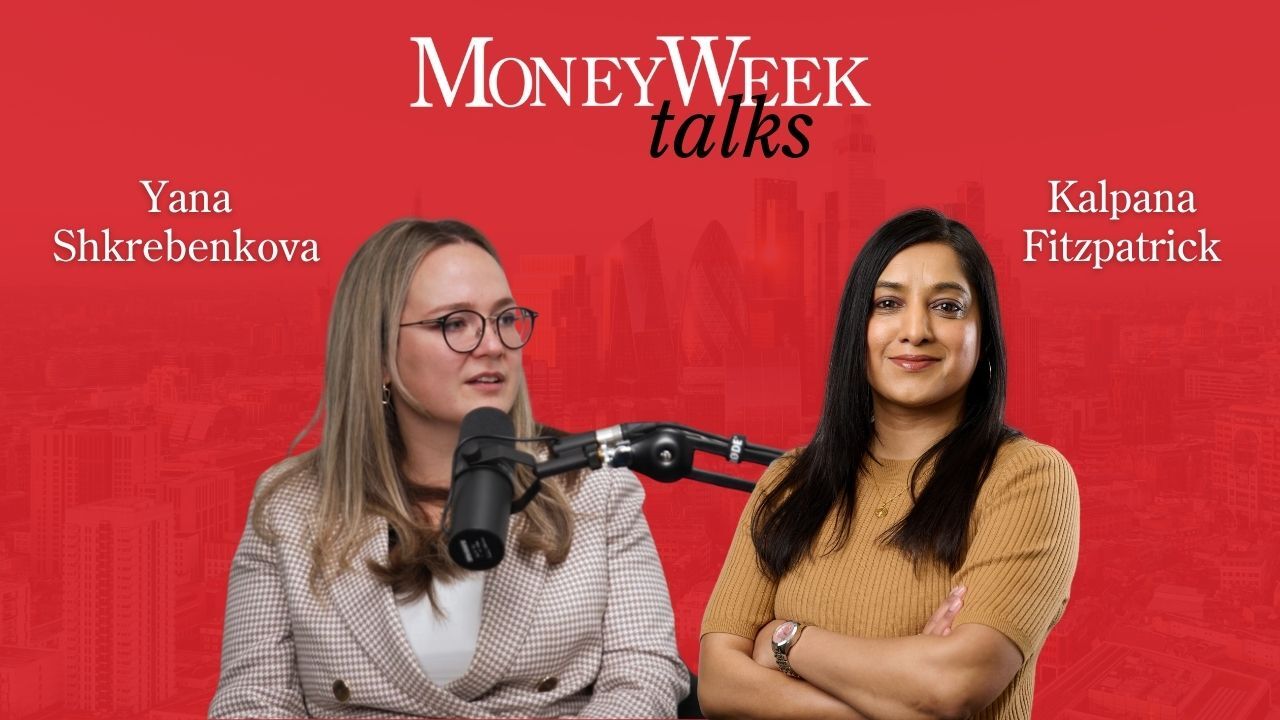 Will fintechs change the way you invest?: MoneyWeek Talks
Will fintechs change the way you invest?: MoneyWeek TalksPodcast MoneyWeek's digital editor, Kalpana Fitzpatrick, speaks to Revolut Trading CEO Yana Shkrebenkova about how fintechs are changing the way people approach investing.
-
 Six steps business owners should consider before April inheritance tax relief change
Six steps business owners should consider before April inheritance tax relief changeNew limits to inheritance tax-free allowances are coming in from the Spring that affect business owners. Those looking to sell or transfer their assets into a trust before the changes need to act now
-
 Invest in space: the final frontier for investors
Invest in space: the final frontier for investorsCover Story Matthew Partridge takes a look at how to invest in space, and explores the top stocks to buy to build exposure to this rapidly expanding sector.
-
 Invest in Brazil as the country gets set for growth
Invest in Brazil as the country gets set for growthCover Story It’s time to invest in Brazil as the economic powerhouse looks set to profit from the two key trends of the next 20 years: the global energy transition and population growth, says James McKeigue.
-
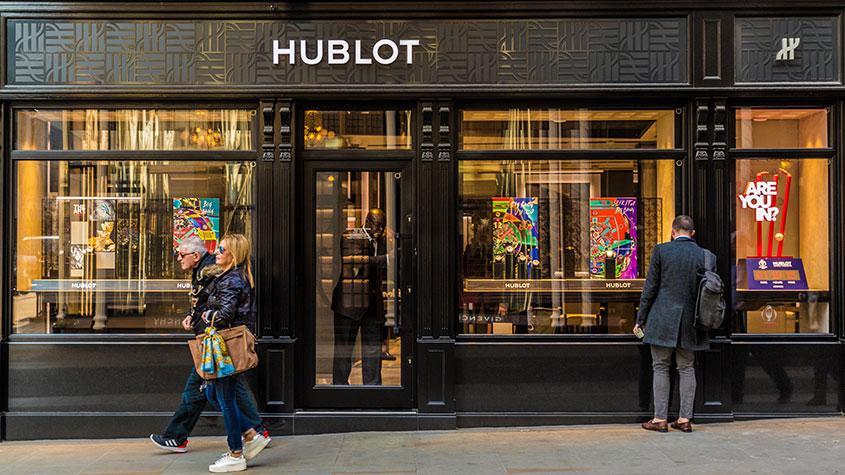 5 of the world’s best stocks
5 of the world’s best stocksCover Story Here are five of the world’s best stocks according to Rupert Hargreaves. He believes all of these businesses have unique advantages that will help them grow.
-
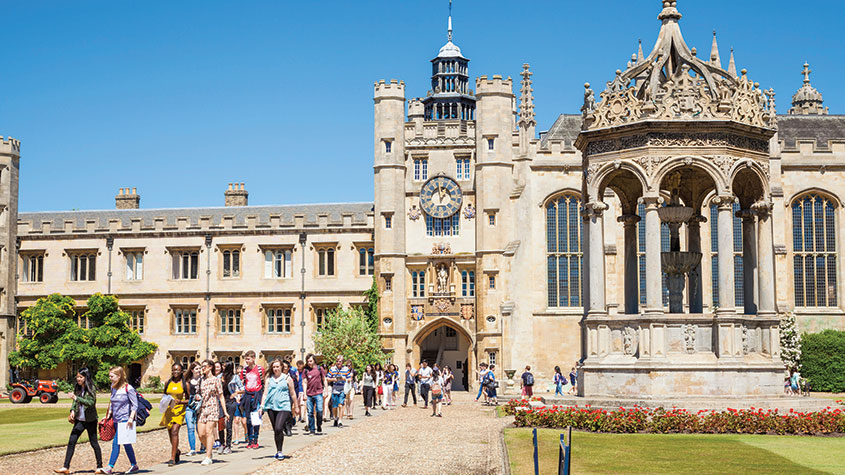 The best British tech stocks from a thriving sector
The best British tech stocks from a thriving sectorCover Story Move over, Silicon Valley. Over the past two decades the UK has become one of the main global hubs for tech start-ups. Matthew Partridge explains why, and highlights the most promising investments.
-
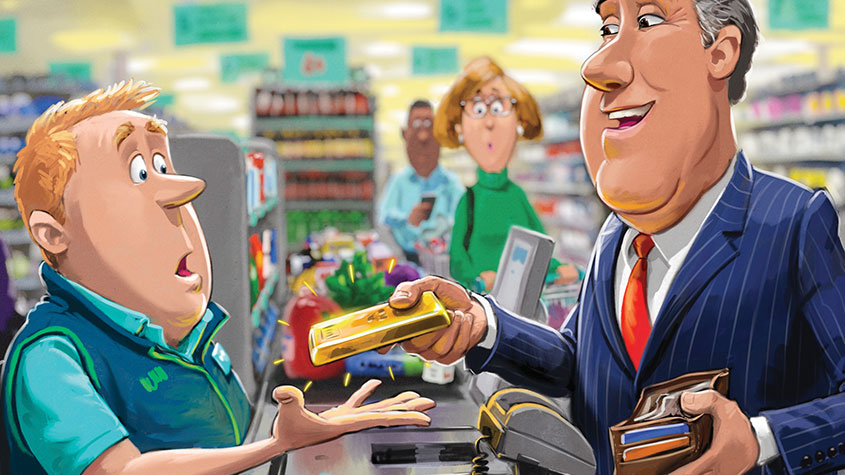 Could gold be the basis for a new global currency?
Could gold be the basis for a new global currency?Cover Story Gold has always been the most reliable form of money. Now collaboration between China and Russia could lead to a new gold-backed means of exchange – giving prices a big boost, says Dominic Frisby
-
 How to invest in videogames – a Great British success story
How to invest in videogames – a Great British success storyCover Story The pandemic gave the videogame sector a big boost, and that strong growth will endure. Bruce Packard provides an overview of the global outlook and assesses the four key UK-listed gaming firms.
-
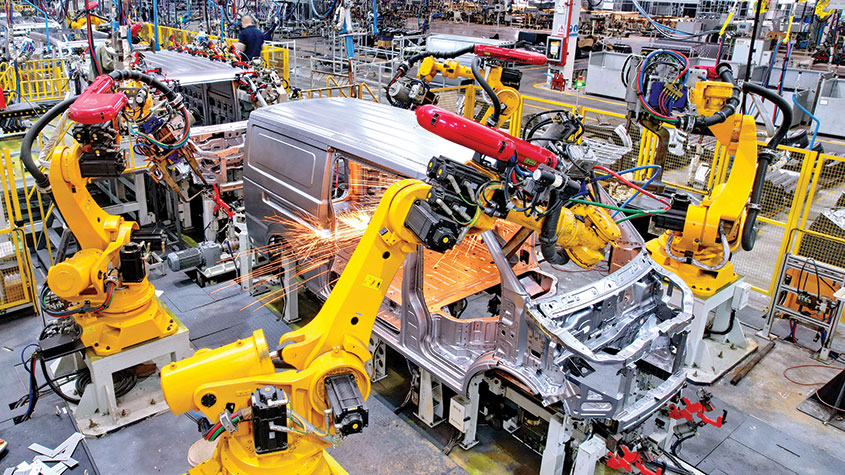 How to invest in smart factories as the “fourth industrial revolution” arrives
How to invest in smart factories as the “fourth industrial revolution” arrivesCover Story Exciting new technologies and trends are coming together to change the face of manufacturing. Matthew Partridge looks at the companies that will drive the fourth industrial revolution.
-
 Why now is a good time to buy diamond miners
Why now is a good time to buy diamond minersCover Story Demand for the gems is set to outstrip supply, making it a good time to buy miners, says David J. Stevenson.
